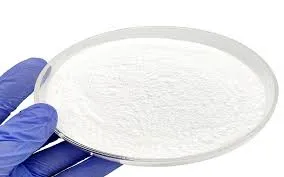Understanding Additives in Plastics
Plastics have become an integral part of modern life, serving countless industries and applications. However, the journey from raw materials to finished products involves not just the base polymers but also an array of additives. These additives are crucial in enhancing the properties of plastics, ensuring they meet specific requirements for various uses. This article delves into what additives in plastics are, the different types used, and their significance in the industry.
What Are Additives?
Additives are substances added to plastics during the manufacturing process to modify their properties, improve performance, and enhance their functionality. The primary purpose of additives is to optimize the characteristics of plastics to better suit the end application. Whether it’s making a plastic more flexible, durable, weather-resistant, or easier to process, the right additive can significantly transform a basic polymer into a highly specialized material.
Types of Additives
There are several types of additives used in plastics, each serving specific functions. Here are some of the most common categories
1. Plasticizers These are substances added to increase the plasticity or fluidity of a material. They work by embedding themselves between the polymer chains, causing them to slide more easily against each other. This results in products that are softer and more flexible, which is essential for applications such as vinyl flooring, upholstery, and electrical cables.
2. Stabilizers These additives are crucial for protecting plastics from environmental degradation, particularly when exposed to light, heat, or oxidative conditions. Heat stabilizers prevent thermal degradation during processing, while UV stabilizers protect the material from UV radiation, which can cause discoloration and loss of mechanical properties over time.
what are additives in plastics

3. Fillers Fillers are often used to reduce costs by replacing some of the more expensive primary plastic materials. They can also enhance various mechanical properties. Common fillers include calcium carbonate, talc, and silica, which can improve rigidity, thermal conductivity, and overall strength.
4. Flame Retardants As the name suggests, these additives are designed to reduce the flammability of plastics. They work by either releasing flame-inhibiting gases when exposed to heat or by forming a protective char layer that prevents oxygen from reaching the underlying material. Flame retardants are vital in applications such as electronics, automotive components, and construction materials.
5. Colorants These are used to impart color or enhance the aesthetic appeal of plastic products. Colorants can be pigments or dyes, and their use varies from consumer goods to industrial applications. The right colorant not only provides visual appeal but can also improve certain properties, such as UV resistance.
6. Antioxidants These additives are essential in preventing the oxidation of plastics during processing and service life. Oxidation can lead to degradation, resulting in changes in color, loss of strength, and brittleness. Antioxidants help to stabilize the polymer chains, extending the lifespan of plastic products.
7. Processing Aids These additives improve the manufacturability of plastics, making processes like extrusion and molding easier and more efficient. They can help reduce viscosity, enhance flow characteristics, and minimize defects during processing.
Significance of Additives
The role of additives in plastics cannot be overstated. They enable manufacturers to produce materials that meet rigorous performance standards while also allowing for cost-effective production. Additives contribute to sustainability efforts as well; for example, enhanced recyclability and biodegradability can be achieved through specific additive formulations. Furthermore, the ongoing research in additive technologies is leading to the development of smart plastics with functionalities such as self-healing, conductivity, and enhanced durability.
In conclusion, additives play a vital role in the performance, processing, and longevity of plastic materials. They allow for customization and optimization of plastic products for specific applications, from household items to advanced industrial components. As technology evolves, the potential for innovative additives that further enhance plastic performance is vast, ensuring that plastics will continue to be a cornerstone of modern material science.

